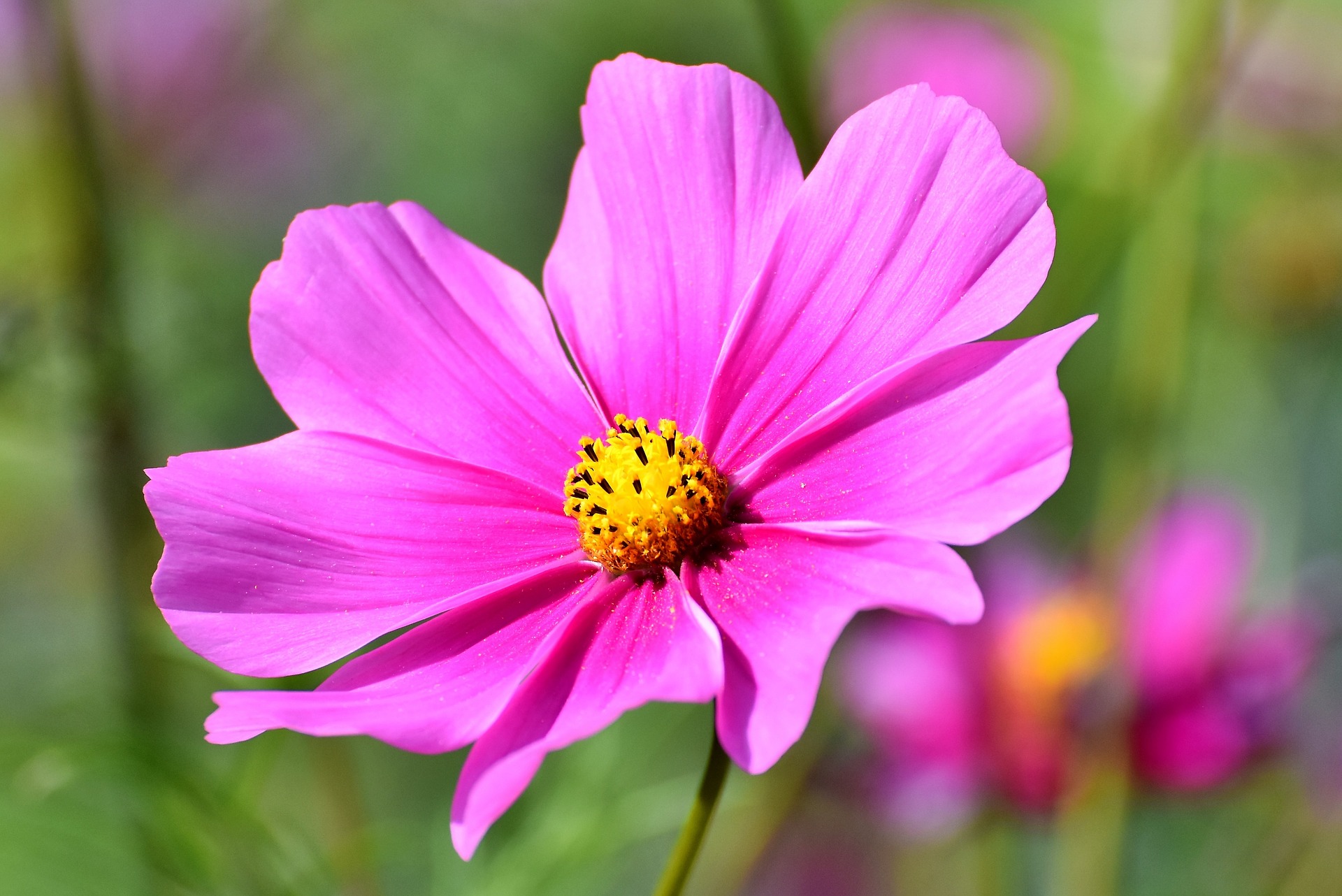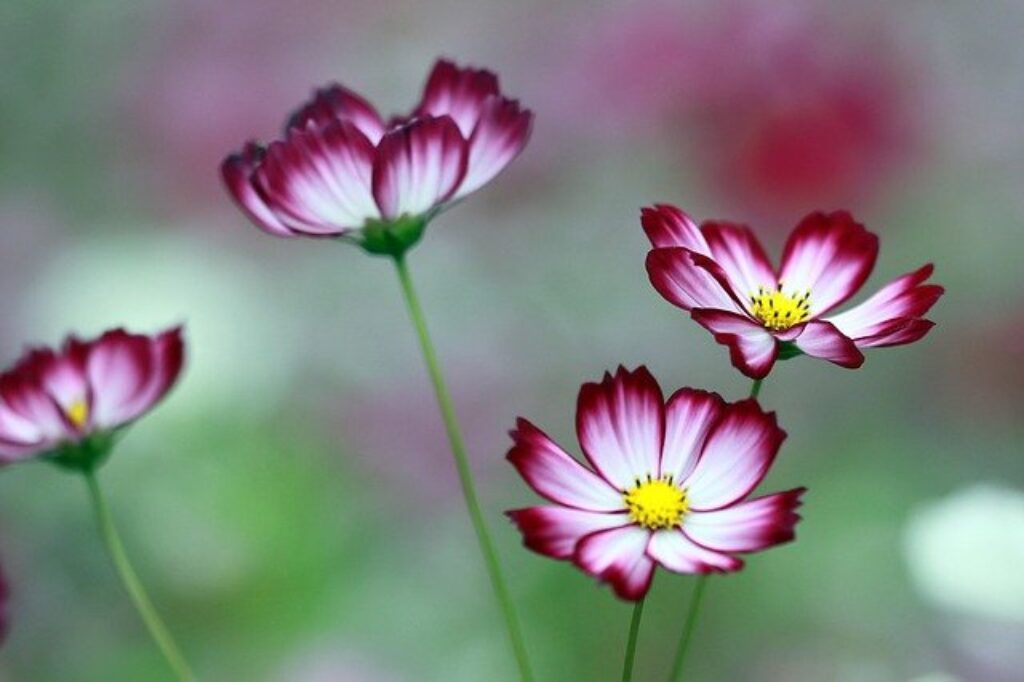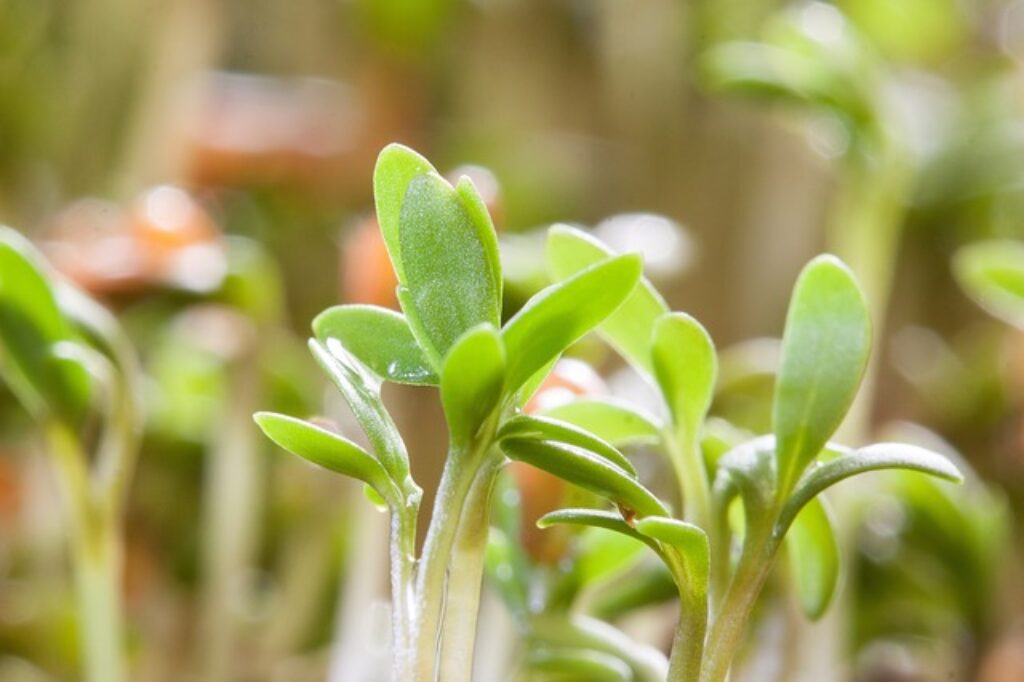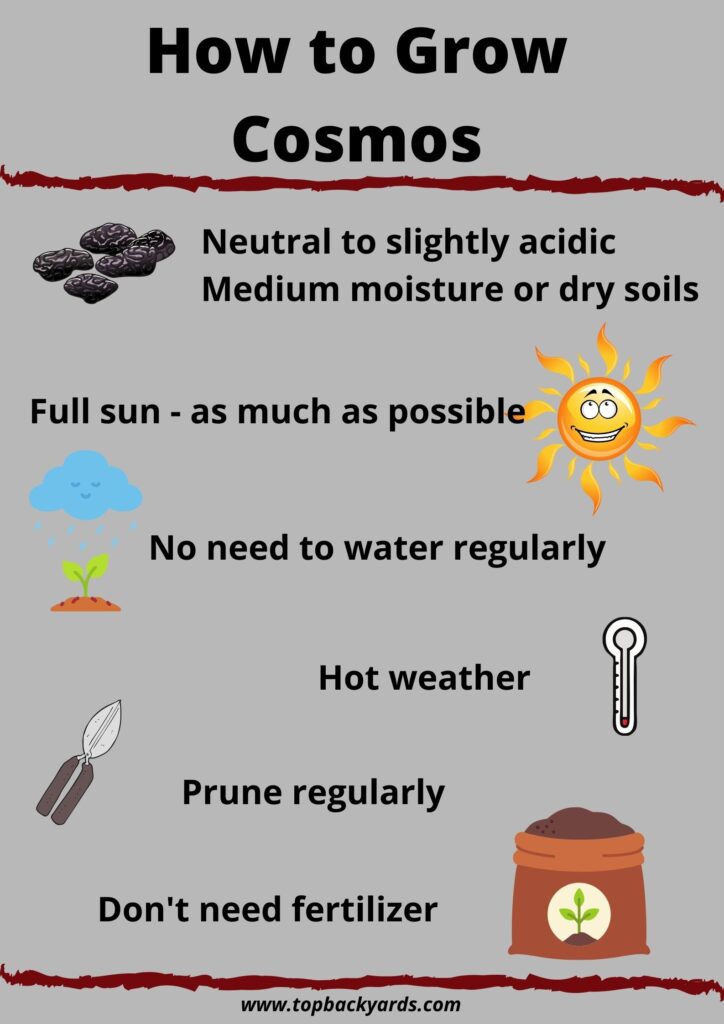
Cosmos are gorgeous flowers that give any summer garden a lovely pop of color. These plants are the freely flowering sort that grow easily and take only about two months to reach full maturity. The best thing about these plants is that they stay in full bloom for months and you can easily grow them by scattering the seeds about. They require hardly any care at all.
Growing and caring for cosmos is simple and very rewarding when you get to see the results. If you’re interested in growing your own, but you don’t know how to go about it, we’re here to help! We’ve got all the information you need on how to grow and care for cosmos so let’s go ahead and have a look!
What Are Cosmos Flowers?

Cosmos are annual flowers that can reach a height of 1-6 feet with a spread of about 1-3 feet. These flowers love full sun which is why they’re considered great summer flowers. They’re native to the Southern U.S. and Mexico (which are hot and dry areas) and they usually stay in full bloom from summer all throughout fall.
Cosmos come in a wide variety of colors including white, pink, magenta, orange, red, yellow, chocolate and golden yellow, so take your pick! You’ll find they’re really easy to grow in garden beds and are great as cut flowers. There are many varieties available so let’s first take a look at what these are.
Types of Cosmos Flowers

There are two varieties of cosmos that are typically grown in gardens. The first is Cosmos sulphureus, which is native to Mexico, Northern South America and Central America. These have golden yellow flowers and they love hot weather. They’re also excellent at tolerating drought.
The other variety, Cosmos bipinnatus, is a colorful flower that looks similar to daisies. These come in pinks, reds, white and orange. They’re shorter than the C. sulphureus plants and they don’t tolerate heat as much.
Here’s a list of some of the most popular varieties of these plants:
- Seashells Series – these flowers are pastel colored and have tubular petals.
- Peppermint Candy – these blooms are usually have magenta and white splashed all over the petals. They’re quite a favorite among many gardeners.
- Cosmic Orange – this is a beautiful, orange flower that tolerates drought excellently.
- Bright Lights Mix – these flowers come with a blend of oranges, reds and yellows.
- Chocolate Cosmos – yes, it sounds surprising, but there are chocolate colored cosmos. This interesting variety is dark red and the blooms have a faint chocolate smell which is what gave them their name. Chocolate cosmos are perennial flowers that grow from tubers. You’ll find they’re a great deal more finicky than annual cosmos.
What to Consider
When it comes to growing cosmos, there are some important factors that need to be taken into consideration such as:
- Soil
- Light
- Water
- Humidity and temperature
- Pruning
- Fertilizing
As we’ve mentioned before, these plants are easy to grow so you won’t need to worry too much about all this. However, paying a little attention to these factors can help the plants to grow their best. Let’s look into each of these points in a little more detail.
Check the Soil
Cosmos plants need neutral or slightly acidic soil to grow. They can also grow in poor soil unlike most other plants since they’re quite hardy but neutral to slightly acidic is ideal. The soil should be well-drained and contain medium moisture meaning it shouldn’t be too dry or too moist. But don’t worry, cosmos aren’t that picky and grow fairly well in dry soils. It’s best to avoid soil that’s too rich since the plants will grow far too tall to the point where they fall over. If this happens, stake the plants or grow them close to each other or other plants so that they’ll get some support.
Cosmos Love Light
As we mentioned before, cosmos love full sun. Although they grow well in partial shade, you’ll find that they grow better when they have at least eight hours of sun a day and best with as much sun as possible. Try to avoid planting them in shade or partial shade since you won’t be able to see best results.
Watering Your Cosmos
One of the reasons cosmos are so easy to grow is because you hardly need to water them. Unless you’re in the middle of a prolonged drought you don’t need to water your plants at all. They’re the last plants that need irrigation so that makes a lot less work for you!
Humidity and Temperature
Cosmos need hot weather to thrive and they also grow well under almost any level of humidity so you won’t need to worry about this one too much.
Pruning Your Plants
You’ll need to prune your cosmos plants regularly since this will make them bloom more, look great and stay healthy. Trimming them also encourages new growth, removing the older, ugly stems and foliage.
Fertilizing

Cosmos don’t require any fertilizing since they can handle even the poorest of soil. Fertilizing them can actually have a negative effect on the plants since it can create too much foliage and less blooms. Leave off fertilizing your plants unless they absolutely need it.
Growing Cosmos

You can buy cosmos seedlings if you wish but it’s much easier to grow them from seeds. You can start growing them indoors for about 4-6 weeks before the last frost comes around. However, if you sow them out in the garden they’ll catch up faster. These plants take about 7-21 days to germinate and typically flower in 50-60 days.
Don’t worry about keeping too much space in between your cosmos. If you scatter them around on the soil, they’ll be able to support one another as they grow. Thin them if you need to and remove the extras to another area of your garden if needed.
Before you sow your cosmos seeds outdoors, make sure that there’s no danger of frost. Although cosmos grow quickly, a late frost can destroy them just as quickly so take your time with these plants and don’t rush.
Summing Up…

As you can see, cosmos are some of the easiest plants you can grow in your garden since they require hardly any effort at all. Try different varieties to make your garden look bright and colorful. We hope you found our article useful and good luck with planting your cosmos!






